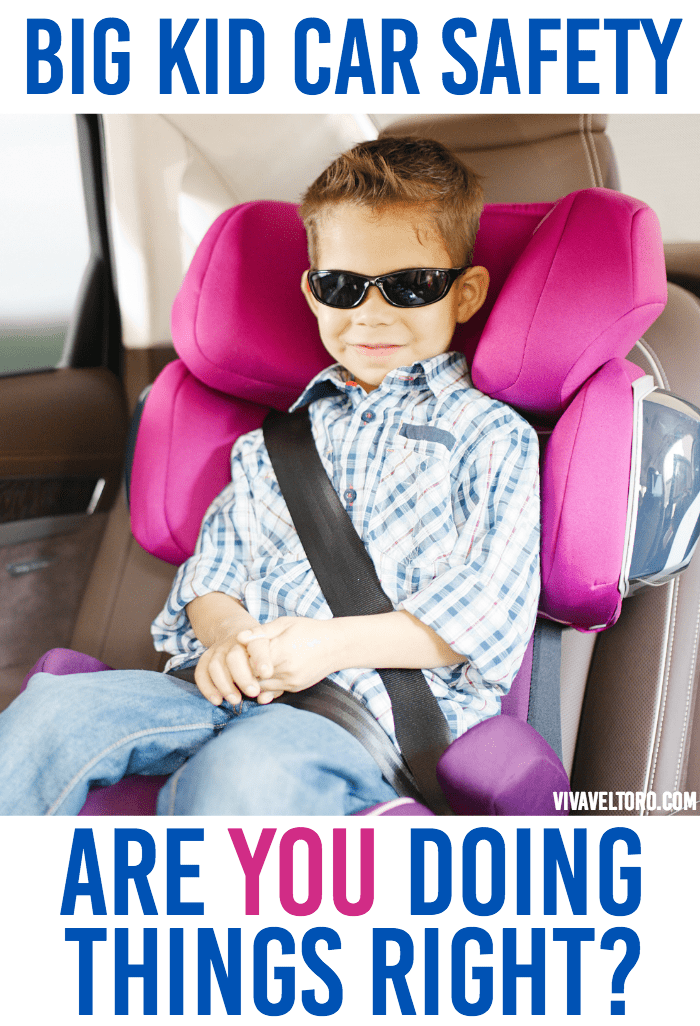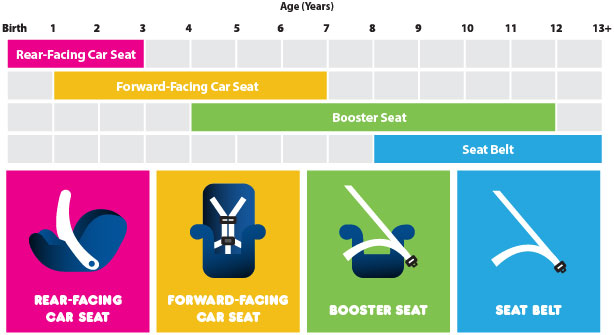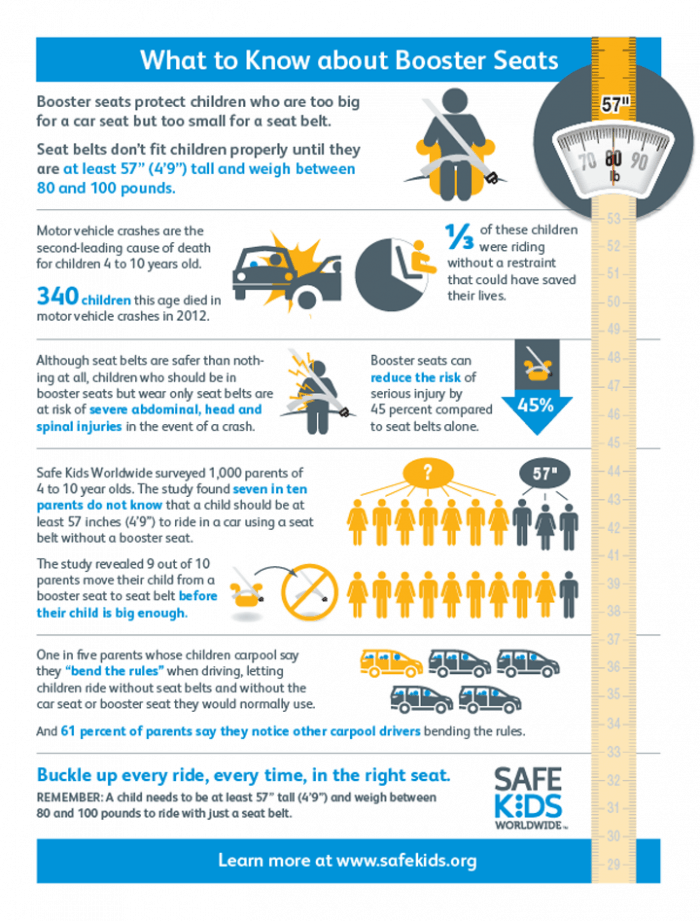I know we talk about infant and toddler car seat safety pretty often, but lately I've been noticing a trend on my personal social media feeds. I've been seeing 4 and 5 year old children sitting in backless booster seats and 8 and 9 year olds sitting in the front seat next to their parents. Knowing these children's parents, I know that they wouldn't intentionally put their kids in harm's way, so I think there must be a big lack of information and education about what is safe for young children. I touched on this in my post about 8 Common Car Seat Mistakes that You May Be Making, but I wanted to take a few minutes to discuss "big kid" seating options a little more in-depth - specifically when children can transition to a booster seat or seat belt.
First of all, it's recommended that ALL children less than 13 years of age sit in the back seat. It's safer and decreases the risk of injury from the front seat airbags. This is a recommendation that's been handed down from the American Academy of Pediatrics (AAP), the National Highway Traffic Safety Administration (NHTSA), and the Centers for Disease Control and Prevention (CDC).
Now that we've gotten that out of the way, let's talk about booster seats - what they're for and who needs them. To put it quite simply, booster seats are necessary because most seat belts were designed for adults. The shoulder belt will likely lay very close to your child's neck (now think about you slamming on your brakes in the event of an accident) and the lap belt will likely sit over your child's abdomen. That could mean your child sustains severe injuries to their abdominal organs if you're in an accident. A booster seat will essentially lift your child up so that the safety belt is correctly positioned over the bones of their hips rather than their abdomen, and it will help the shoulder belt stay away from your child's neck. According to SafeKids.org, "Children seated in a booster seat in the back seat of the car are 45% less likely to be injured in a crash than children using a seat belt alone."
Image source: safecar.gov
I've talked many, many times about keeping children rear-facing for as long as possible (the minimum age is 2 years old according to the AAP). Kids should remain rear-facing until they reach the height or weight limit set by their car seat's manufacturer. Then, they can transition to a forward facing seat; however, they should remain in a 5 point harness for as long as possible with use of a top tether until they reach the height of weight limit for their seat.
Once a child truly outgrows their forward facing car seat (around age 7 or 8 in most cases!), then they can transition into a booster seat (in the back seat of the car). Children should remain in a booster until he or she is big enough (notice I didn't say old enough) to fit in a seat belt properly. Age really should not be the standard - some children are very small for their age and in those cases they may need a booster seat longer (and there are discreet options like the Safety 1st Incognito).
How do you know when your child no longer needs a booster? They'll need to pass the "Safety Belt Fit Test."
- The child's knees should bend at the edge of the seat when his or her back and bottom are against the vehicle seat back;
- The vehicle lap belt should fit across the upper thighs; and
- The shoulder belt should fit across the shoulder and chest.
For most kids, they'll need to use a booster seat until they are at least 4 feet 9 inches tall and weigh between 80 and 100 pounds. Generally, they'll be between ages 8 to 12 year old when this occurs.
Special thanks to SafeKids.org for this great infographic.
Image credits: copyright





Elisabeth says
Thank you for the tips, I'd rather be safe than sorry!
Amber Ludwig says
Thank you for getting this info out there!! You are so right in saying that its become quite the fad now to rush to transition kids into backless boosters and seatbelts!! Ive been pretty shocked myself!! I love your charts but disagree with the forward facing line! It should start at 2 and not 1 🙂 Hopefully they change it!! I feel like people avoid saying things as to not offend but seriously this is our children's lives we are talking about!! And so many people I think are just completely unaware what is considered safe and why.
Lauren - émoi émoi says
Good advice, thanks for sharing!
Lauren
http://en.emoi-emoi.com/
Sue M. says
This is really helpful information. My nephew and his wife have a 2-year-old daughter, I will pass this on to them. Thanks for posting!
Deborah D says
I will tell my sister to read this post.
Lani says
I LOVE that graphic! Very clear. I'm glad this topic is finally getting a lot of attention- its important!
Mia says
Such important information for all of us to have. I feel so much more secure having my grandkids in their booster seats and I think they just get used to it when its the norm and what is expected.
Linda Manns says
Thank you so much for sharing this I was going to research this because my eight year old grandson is wanting out of his booster seat. Thank you for sharing this. You saved me alot of time.